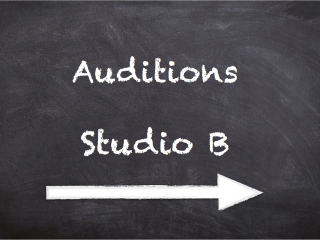Have you ever been interested in doing voice over for cartoons? Or maybe you want to explore a character voice for an upcoming play? Whether you’re looking to use your character voice for theatre, film, or voice over, there’s a lot of elements to consider. You want to develop a character voice that’s unique to you, that expresses your character’s personality, and that is sustainable to maintain over many performances.
Find Your Base
Understanding the character attributes of your natural speaking voice is the best way to start.
What qualities would you use to describe your voice? Words like warm, raspy, or nasal might come to mind, but dig a little deeper! Think about how the sound of your voice could make someone feel. Many people will describe their voice with words like comforting, trustworthy, or authoritative. If you’re stuck, ask friends and family members how they would describe your voice – hearing how others describe your voice can be really insightful.
Once you know what qualities your natural voice has, you can then make adjustments to suit your character. Your natural speaking voice is your base-level. In cartoon voice overs, voice actors will have a large range of character voices that they have developed, but they will often use their own natural voice if it suits a character. Think of H. Jon Benjamin – a voice actor who uses his natural voice for both Bob Belcher in Bob’s Burgers and Sterling Archer in Archer. The qualities of his natural speaking voice lend themselves to the characters he was portraying, so no major adjustments were needed to voice those characters. You may find that the character you’re working on only needs slight adjustments from your natural voice to achieve the character’s voice.
Character Attributes
If someone closed their eyes and listened to your character voice, would they be able to guess something about your character’s personality? Ideally, the answer would be yes!
Start by making a list with as many words to describe your character as you can. Once you have your list, think of vocal qualities that reflect those attributes. If your character is authoritative, they might have a deeper, booming voice. If your character is flirtatious, they might use a lot of breathiness when they speak. Take some time to think about how you can infuse the personality of your character into the voice. If you’re looking for inspiration, watch the brilliant Nancy Cartwright flip through the seven different Simpsons characters she voices!
Experiment
Once you have an idea of the character attribute you want to use in your voice, it’s time to play! You can play around with range, pitch, tempo, and different areas of resonance to create all sorts of weird, wacky, and wonderful sounds. It can be really helpful to record yourself speaking lines of texts in variations of your character voice. That way, you can listen back and decide which elements you like and which you want to adjust. It can take a while to land on the exact voice you want to use, but I think experimenting with sounds is the most fun part of the process.
Sustainability
A character voice should never cause pain or discomfort. If you’re finding any sort of discomfort or vocal fatigue after working in your character voice, it’s so important to find other ways of achieving the same sounds. Working with a voice and speech coach will be the best way to find out exactly how you can produce the sounds without causing harm to your cords. However, it’s quite likely that if you’re having discomfort from speaking in a character voice, it’s coming from too much air pressure or force on your cords. It’s important to be gentle on your voice, especially when first exploring new sounds! If you do cause some harm during your exploration, check out our blog on how to come back from a vocal injury.
Warm Ups & Cooldowns
Once you’ve decided on your character voice, it’s time to develop warmups and cooldowns that will help you to prepare your voice before each use. In general, when you’re warming up your voice, you should warm up all areas of your voice. However, if you know that you will be using one particular area of your voice a lot, it’s a good idea to add in some extra warmups for that area. If you’re looking for a warmup to start, this video from the National Theatre is a great place to start!
With a cooldown, you want to return your voice to its natural state. For example, if you’re working your upper register a lot in your character voice, you’re going to want to add in a lot of lower register cooldowns to bring the height of your larynx back down. A cooldown will help to keep your voice in tip-top shape. If you’re looking to use your character voice in the theater, 8 shows a week can have a big impact, so it’s important to use all the tools you can to stay healthy. For more tips on how to maintain vocal stamina during a long contract, check out our blog here!
A character voice can help you unlock a whole new level in your performances. It can help you to add so much comedy, drama, and everything in between. Allow yourself to have fun and keep exploring – the vocal options truly are limitless!














